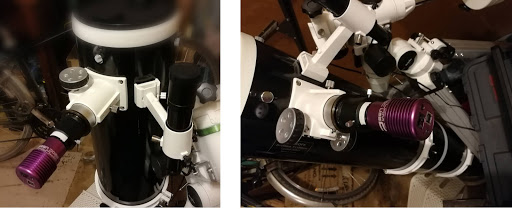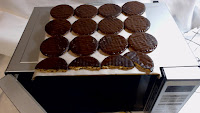Each video will have been recorded in a single take, and without a script or notes in order to try to reproduce the 'live' experience. Also, it would simply be too dispiriting to deliver a long and stilted monologue by reading from a script ... oh how I miss sharing my love of science face-to-face with a group of people who can provide real-time feedback! This video-based approach is, you can tell, not my ideal - although a variant of it worked very well when I was teaching students (see here) as face-to-face follow-up sessions were built into the process. The upshot is that viewers will get all my stumbles, throat-clearing, failures in memory and moments of lost track: forbearance is a good quality in such contexts. I am not, as you will rapidly discern, a 'natural' in front of the camera. (I'm reminded of the media training day I attended a few years prior to retiring during which I was recorded being interviewed: the feedback was hilarious. Apparently, one of my sentences lasted 35 seconds! You have been warned.)
Only after beginning the project did it fully dawn on me what a significant undertaking it was. It's far more tiring to record a talk than it is to share it face-to-face with people. Furthermore, I have allowed myself the opportunity to include more material than I might have risked in a live performance. I have tried not to lose all sense of restraint in this regard but it's been good to have the opportunity of sharing a few more artefacts for instance. What I will try to ensure is that I build a 'sanity break' into the videos every 40 minutes or so: a juncture at which it's easily possible to have a rest. I may do this within a given video or by splitting the thing into two or more parts.
One more thing: although it's entirely possible to read my blog and watch the videos on any suitable device, the larger the screen the more you'll see. It was ever digitally thus 😉
1. What's so special about the Earth?
87 minutes, with an intermission at 42 minutes; there is seven minutes-worth of optional additional material tacked onto the end.The original U3A programme abstract read: "With the discovery of planets orbiting stars other than our own Sun, several of which have been labelled ‘Earth-like’, it might be tempting to conclude that we’re really not that special. Moreover, some might argue that humankind ought to consider spreading out and colonising such exoplanets. Is any of this reasonable?" This topic is tackled first as there is only one practical demonstration I wished to show. This was, in a way, selected as the test-bed for subsequent videos in the present series.
There are a couple of my former blog posts which include relevant information and additional links: on star and planetary formation and on the very subject of the U3A talk at the heart of this topic, here. Indeed, many of the links shown below are also included in these earlier posts.
Useful video/animation links cited within the talk include:
On the scale of bodies in the Solar System
On solar wind
On tectonic plate movement and similarly here
On the Earth-Moon rotation about their barycentre
A fun look at the earth’s rotation on its axis.
Also, there's a great TV documentary available on the importance of the Moon. Whilst on the subject, this is a link to a brief computer simulated animation depicting the probable violent birth of our moon after the Earth collided with a Mars-sized planet in the early years of the Solar System; it shows clearly why the chemical/mineral composition of the Moon is almost identical to the Earth: they both solidified from the same 'mixing pot'. Indeed, since making the video I have come across another contribution to life on Earth made by the Moon: apparently, it once had a weak magnetic field which provided important additional shielding for emerging life on our planet - see here for details.
(Diagrams and figures used in the slides have references to their sources included on the page itself.)
2. Radiation: bad, benign, beneficial - Parts 1 ,2 & 3
Part 1: discovering the language (51 minutes)
Part 2: bad and 'benign' - balancing risk (62 minutes, with an intermission at 27 minutes)
Part 3: beneficial uses of radiation (32 minutes)
There is a blog post written previously which include relevant information and additional links, here.
3. Glass: a look inside - science, technology and art
Part 1: what is a glass and what goes into the mix? Glass in nature, both hot and cold. (58 minutes, with a break at 32 minutes)
There are several of my former blog posts which include relevant information and additional links, but here I include only three of them: here, here and here. There is also a one-hour video, recorded some years ago in Canterbury’s Heritage Museum – now closed, sadly – which covers some of the same ground within a single one-hour video: here.
Part 2: a look at Goethe's observations and Turner's use of his idea (perception and interpretation) - 34 minutes.
There are a couple of my earlier blog posts which include relevant information and additional links: here and here including a link to one of the projects I undertook with the Turner Contemporary gallery in Margate (here).













































